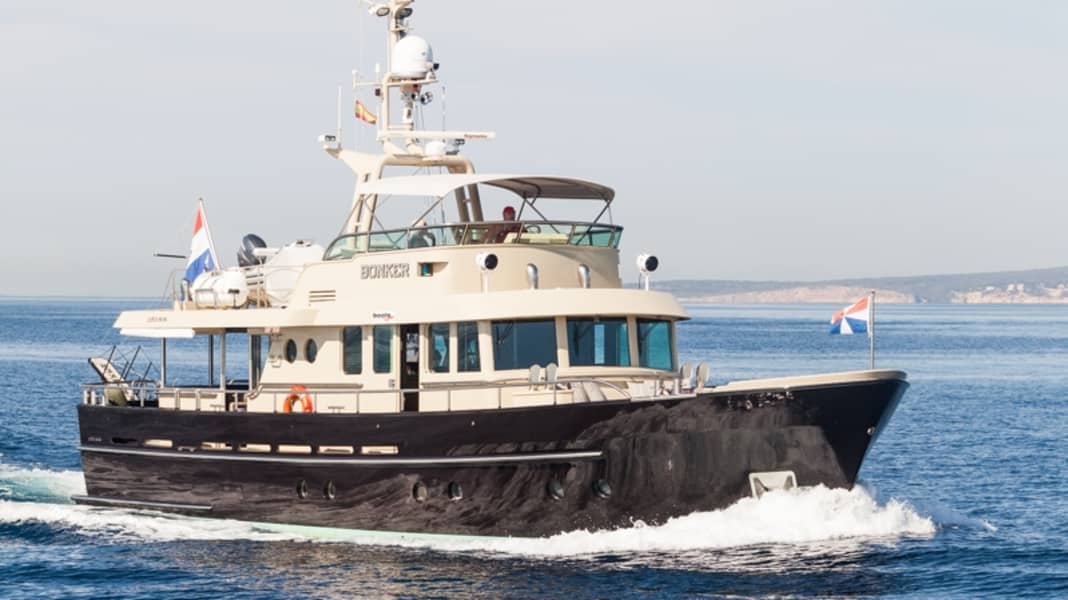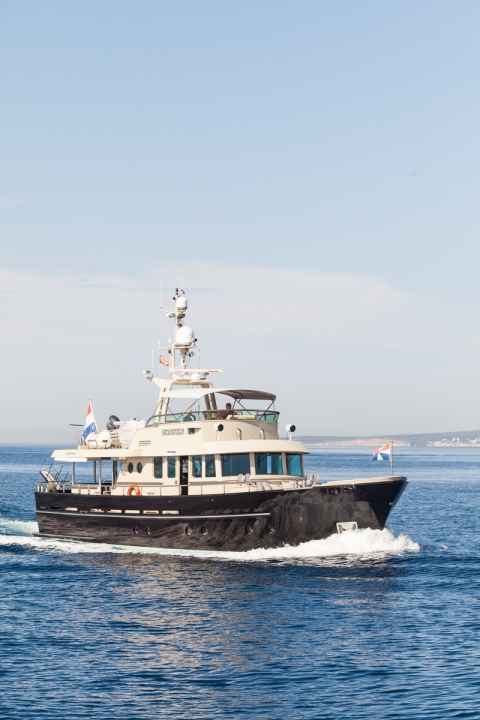

Flevo Ship Holland is a family-run company from the Netherlands that specialises in the construction of customised yachts. The shipyard is characterised by high quality and craftsmanship and is always guided by the latest and most modern developments. Work is carried out in accordance with the requirements of Lloyd's Registers, the classification society par excellence, which places the highest demands on construction and design. Flevo Jachtbouw has many years of experience in the construction of mega yachts in "waistcoat pocket format".

The brothers Aart and Adriaan van Twillert are the two bosses of Flevo Ship Holland. Aart is responsible for the commercial side and his younger brother Adriaan for the technical side. Aart has over thirty years and Adriaan over twenty years of experience in the construction of steel motor and sailing boats. To date, 78 luxury yachts are on their completed order list.






That doesn't seem like much, but with boat lengths of up to 35 metres it's a different story. Both their hobby is boating, but their vocation is building. Their ambition with Flevo Jachtbouw is to make a name for themselves internationally in the construction of luxury boats. This also means adapting the length and height of the production hall for an order that exceeds its dimensions.
Customers are looked after personally from the initial idea, through the entire construction period, to instruction on the finished boat and beyond. This includes the internationally renowned top designer Pieter Beeldsnijder.
Pieter works with many well-known shipyards and, together with his team, is responsible for the design and construction of around 3000 motor and sailing yachts measuring up to almost 100 metres in length. One of the shipyards Pieter works with is Flevo Jachtbouw, which also built "his" own boat, the Bonker.
Bonker is derived from the English word "bonkers" and can be translated as "crazy" or "crazy"
which fits perfectly with the lively and 76-year-old Pieter. It is normal for a yacht architect not to be satisfied with an "off-the-peg" boat - especially as Pieter likes things to be a little oversized. In keeping with the motto "if only - then only", a yacht was built to the highest standards and to the best possible perfection. And that starts with the thickness of the steel plates.
While the wall thickness below the waterline is normally built with 6 to 7 mm thick steel, the same plates on the Bonker are 8-10 mm thick. This continues throughout the boat from the keel to the mast on the flybridge, which is built to be hinged and only ends at just under 10 metres above the waterline. Although this design makes the whole thing a little heavier, the few kilos don't make the difference - but the Bonker is very safe. This is why she has also been fitted with somewhat more powerful engines than normal (2 x 240 hp), namely two 300 hp John Deer diesels, which transmit their power into the water via shaft systems and four-blade propellers.
As is usual with displacement boats, the ranges are heavily dependent on the speeds travelled. Everything fits together on the Bonker: The engines, gearbox and propeller are perfectly harmonised. We measured a top speed of 10.7 knots, which is only slightly above the theoretical hull speed of 10.4 knots, which speaks in favour of a good combination of engines and hull. With a considerable tank capacity of 11,000 litres of diesel, the theoretical range is between 5,370 nm at the lowest speeds and 4 knots and 933 nm at full throttle, plus 15% reserve in each case.
These are figures that are far above the range standards we require, just a bit "bonkers".
Good weather and waves from ferries are no indicator of rough water behaviour. But since the Bonker is certified for CE Category A offshore, and you know that everything on the boat is built a whole lot stronger and more stable, waves don't give you a headache. The zero-speed stabilisers dampen the rolling behaviour perfectly, and it is almost completely compensated for even when anchored.
The manoeuvrability of the Bonker is surprising. At slow speed, it turns on the spot and when cruising, a full circle measures a tight 1 ½ boat lengths. During this manoeuvre, the boat first leans slightly out of the bend and then immediately returns to an upright gait.
The engine compartment on the Bonker is a feast for the eyes and can be accessed from anywhere. It contains everything your heart desires and serves the purpose of safety. Almost! Because there are no water alarm sensors on the switchable fuel filters. Yacht designer Pieter Beeldsnijder recognises this and wants to order them immediately as an urgent accessory. The Bonker has been ploughing through the waters of Europe since August 2008 and even though it is not equipped with the very latest instruments on both helm stations, it has lost none of its charm.
Pieter has equipped the Bonker with three spacious and very comfortable cabins with large bathrooms and a huge saloon. This is complemented at the front by a galley and the interior helmstand. If you want more, you can discuss your wishes in detail with the Twillert brothers. All details can be clarified, from the water treatment system to the space for the scooter. It is understandable that you have to pay a little more for a boat in the style of the Bonker. The pleasure starts at around 1.8 million euros.
Conclusion
Flevo Jachtbouw builds tall ship dreams in steel or aluminium. The Bonker is the showpiece for the shipyard and designers. We like the overall finish, the sailing characteristics are excellent and the safety precautions are impressive. Ultimately, a perfect boat for globetrotters.
Data sheet: Bonker 66
Shipyard: Flevo Jachtbouw
Type designation: Bonker 66
CE category: A - High seas
Length: 19,90 m
Width: 5,60 m
Displacement: 76,00 t
Price: 1.785.000,00 €

